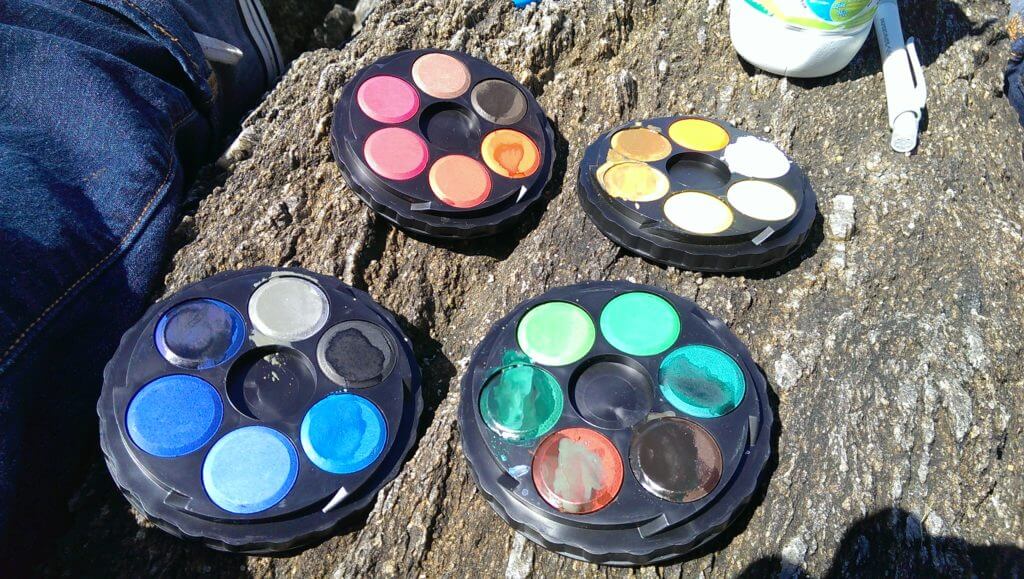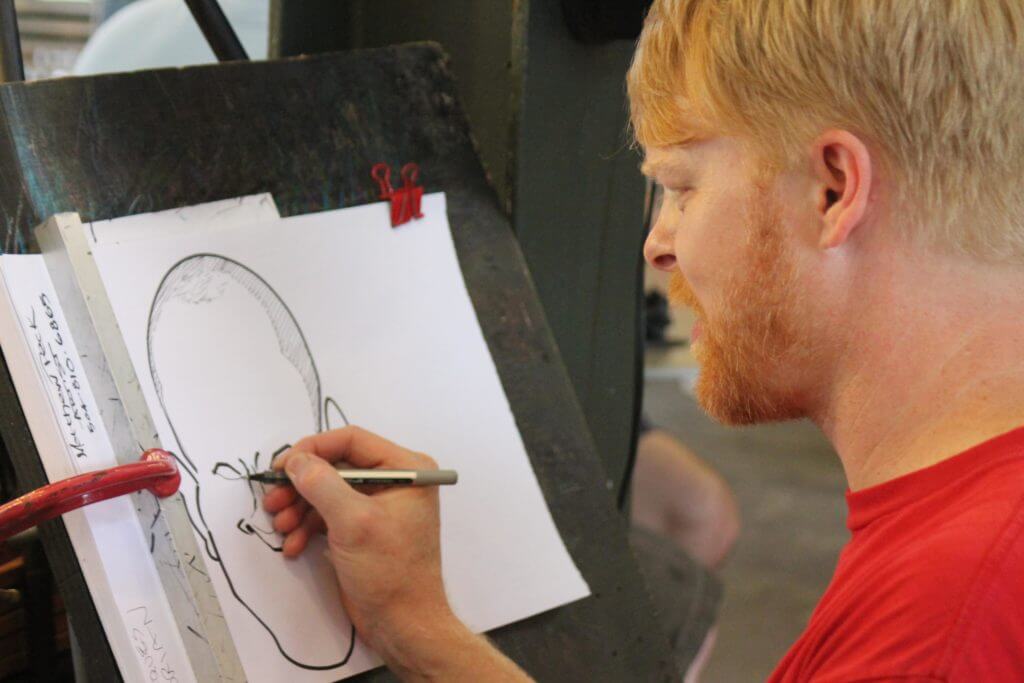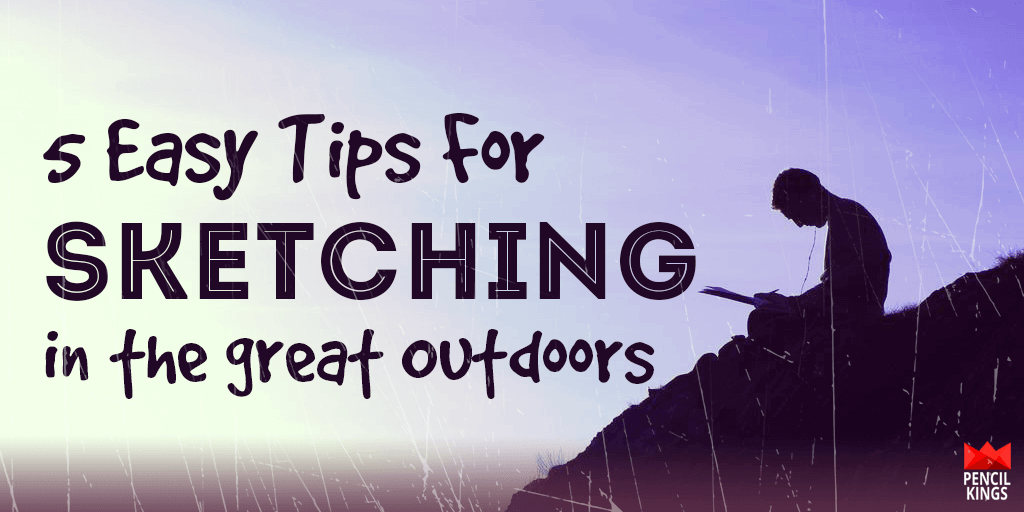Fed up of being stuck indoors? Sketching outdoors is not just a great experience – it can also help you become a better artist. So, grab your favorite pencils and paints, because it’s time to step into the sunshine and fill your sketch book with inspiration!
1. Getting Prepared for Outdoor Sketching
Before you venture outdoors, it’s worth taking some time to prepare yourself and your art materials. Make sure you wear comfortable clothing and suitable footwear and take a look at the weather forecast first – one of our favorite apps for this is Accuweather
Is it sunny? If so, make sure you take a hat and some sun cream – it’s all too easy to lose track of the time and suddenly find you’ve gone a nice shade of lobster red out in the sun! Trust me, this actually happened to me in France last year! Sunglasses can also be useful for those times when the sun is just too bright – especially if you’re sketching or painting near water.
If it’s going to drop cooler later, you’re going to need a hoodie or jacket to wrap up when the wind starts to blow. Sketching outdoors can be great fun in all weathers, but it’s important to wear the right clothing because feeling too cold or too hot can distract you from the important act of making art! You might also want to take something like a blanket or cushion to sit on.
Finally, it’s worth packing some drinks and snacks to keep you fuelled while you’re sketching outdoors. There’s nothing worse than feeling thirsty or ravenous when you’re trying to concentrate on the wonders of nature before you. That spectacular scene before you can easily take second place to dreaming about an ice-cold can of your favorite drink if you’re not careful!

2. Plan Your Outdoor Sketching Route – Rural or Urban?
Do you head out into the country or sit in a busy street and sketch when sketching outdoors? It’s up to you – doing both of these can hugely improve your skills of observation and getting art ideas down quickly. You’ll find you get a sense of energy in your sketches that’s often difficult to capture when sketching indoors. And hopefully, this will add an extra element to your finished paintings.
Plan how you’re going to get to where you need to be. Whether walking, cycling, driving or taking the bus, you need to get to your destination without any unwanted detours – these can add hours to your day and distract you from a great days’ outdoor sketching!
3. Choose Your Art Materials Carefully
There’s no need to take your full studio set-up with you when you go drawing outdoors. So, if you don’t fancy carrying an easel up steep hills or struggling along busy streets with a heavy box of art materials, try selecting the most portable products for the job at hand.
A small set of watercolors with a bottle of water for mixing colors can be ideal, as can a set of watercolor pencils, fiber-tip fineliners, markers or simply a good range of pencils and an eraser. Always carry a pencil-sharpener, too –blunt pencils can be good for shading, but you’ll need a sharp point for details.
Think about the paper in your sketchbook – you’ll need a grade that can handle your chosen medium and that won’t curl up when wet. Take a look in your local art supplies store – you’ll see there’s a wide range available to suit any purpose.

The Golden Ratio occurs in nature and has been used by artists as a composition tool for centuries
4. Sitting Comfortably? Getting Started With Sketching
When learning how to sketch, it’s always good to plan out some rough ideas first. Take a good look around you until you see something that captures your eye – perhaps an interesting building or a group of people, a stream of water trickling down some rocks or a gnarled, twisted tree hanging over a river?
Once you’ve found it, do some quick thumbnail sketches to help you plan your composition. It’s amazing how doing this can throw up other possibilities and help you create a better sketch. If you have your cell phone or a camera with you, you can use this as a handy way of framing your subject.
Try and think about perspective and the golden ratio – this is where you divide your composition up into sections as in the illustration above.
It’s a technique that’s been used by artists for centuries and an equation that occurs throughout nature, such as in pinecones, shells and even in our own bodies. Think about your natural hair line – that’s right, it’s the golden ratio working its magic!
With regards to perspective, try and establish where the horizon line should be and draw diagonal lines to meet it – this should help you work out where to place the elements of your composition.
Once you’ve sketched out a few ideas for compositions, you’re ready to begin sketching outdoors. Make sure all your art materials are close to hand and start making some marks.
If using pencils, get the basic shapes down quickly and don’t be afraid of making mistakes. Just keep drawing those lines until you’re happy with the results – you can always rub out any unwanted lines later.

5. Look, But Don’t Stare When Sketching
When learning how to sketch, many people make the mistake of trying to capture everything they see before them. You don’t need to do this – instead, try and think about how you can capture the essence of the scene before you with the minimum of fuss.
See that large crowd of people in the street? You don’t need to draw every single detail here – just break everything down into shapes and colors which represent them. Try looking at the work of semi-abstract artists beforehand – this will give you an idea of how to do this.
Whether using pencils or watercolors, outdoor sketching is often a case of less is more. Finally, don’t be too precious about your work – have fun and remember you’re not trying to create a masterpiece here. The more you sketch, the more sketching techniques you’ll learn and the better artist you’ll become!
Have you got any favorite art materials when you go sketching outdoors? Tell us about them in the box below.

hello pencilkings, I’m Tisa and I’m a product design student currently doing a research for my final project about outdoor sketching / painting because I am going to design an artist travel bag to help artists and designers be more comfortable on sketching, painting and designing while away from the studio. for that reason, I would love if you have some time for a small online interview. thankyou very much in advance